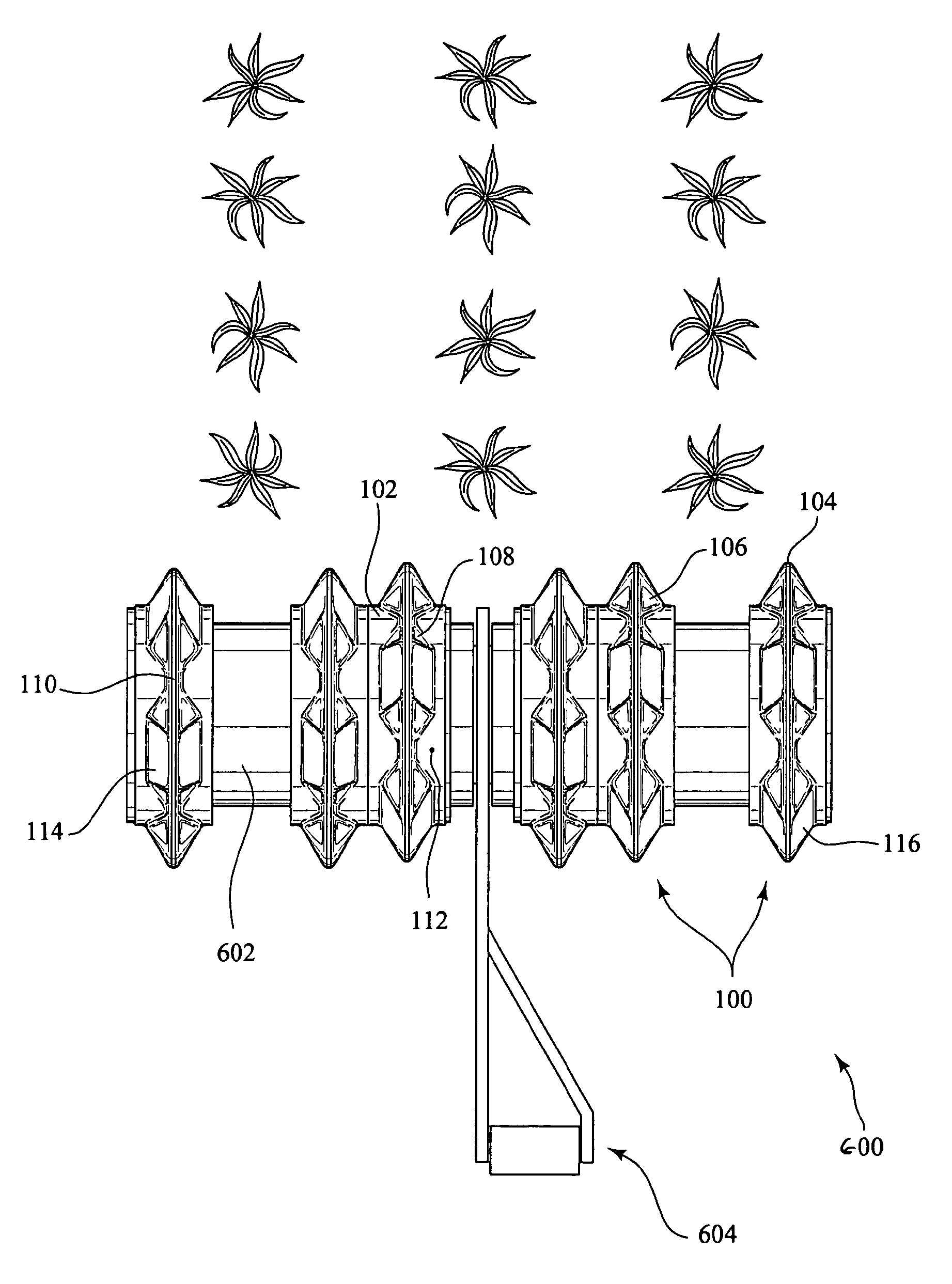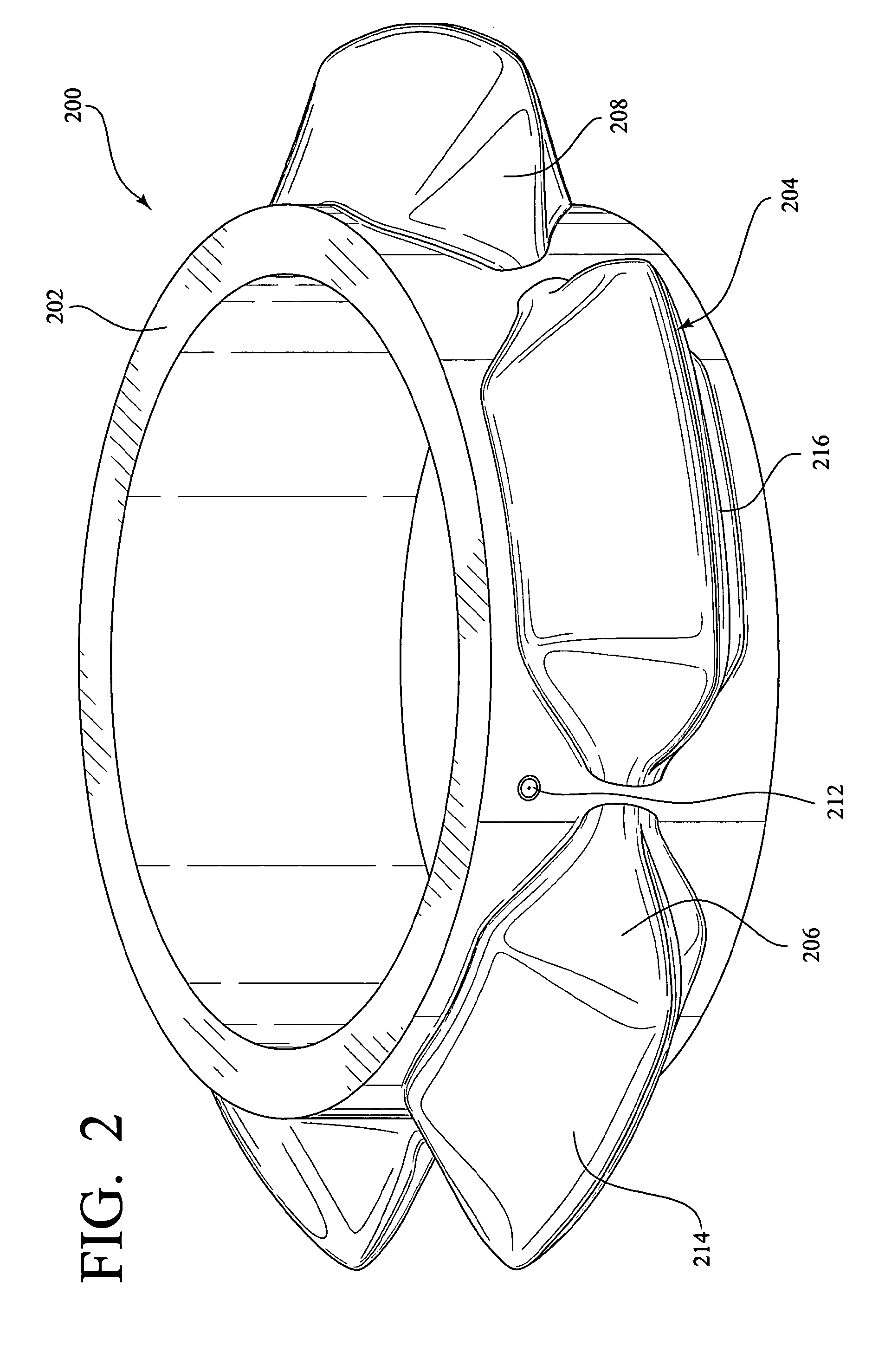Soil conditioning device
a technology of soil conditioning and soil, which is applied in the direction of non-skid devices, thinning machines, spades, etc., can solve the problems of reducing oxygen, limiting aeration activity, and reducing the efficiency of processes and associated devices, so as to improve soil permeability, reduce water runoff, and improve the effect of soil permeability
- Summary
- Abstract
- Description
- Claims
- Application Information
AI Technical Summary
Benefits of technology
Problems solved by technology
Method used
Image
Examples
Embodiment Construction
[0042]FIG. 1 shows soil conditioning device 100 having a series of prow shaped peripheral ridge members 104 joined by sub-ridge members 110 circumscribing wheel or disc 102. Each of the plurality of ridge members 104 has a leading prow shaped surface 106 and a trailing prow shaped surface 108. Spanning between each leading surface 106 and trailing surface 108 is a subridge member 110. This embodiment of the soil conditioning device may also be described as a wheel member 102 having a central continuous outer peripheral ridge of varying heights about wheel member's 102 circumference. The peripheral ridge is formed by prow shaped peripheral ridge members 104 having leading prow shaped surface 106 and trailing prow shaped surface 108. Ridge members 104 are joined or interposed by sub-ridge members 110 and have a rounded top surface and side walls 114 and 116 sloping toward wheel member 102.
[0043]Soil conditioning device 100 is shown circumscribing wheel 102 and being of a unitary mater...
PUM
 Login to View More
Login to View More Abstract
Description
Claims
Application Information
 Login to View More
Login to View More - R&D
- Intellectual Property
- Life Sciences
- Materials
- Tech Scout
- Unparalleled Data Quality
- Higher Quality Content
- 60% Fewer Hallucinations
Browse by: Latest US Patents, China's latest patents, Technical Efficacy Thesaurus, Application Domain, Technology Topic, Popular Technical Reports.
© 2025 PatSnap. All rights reserved.Legal|Privacy policy|Modern Slavery Act Transparency Statement|Sitemap|About US| Contact US: help@patsnap.com



